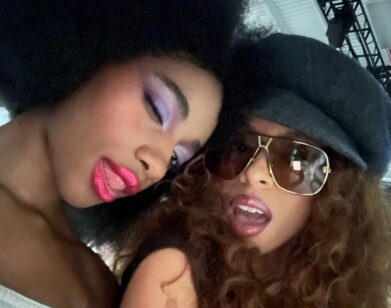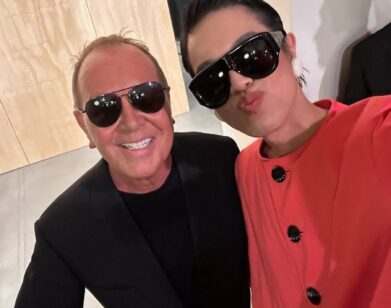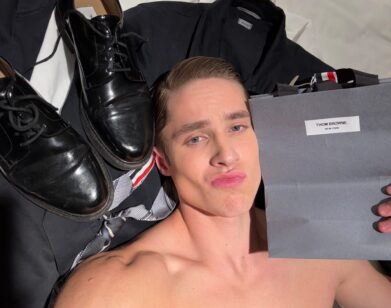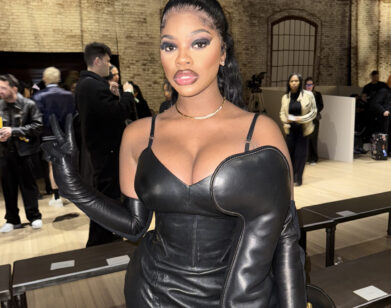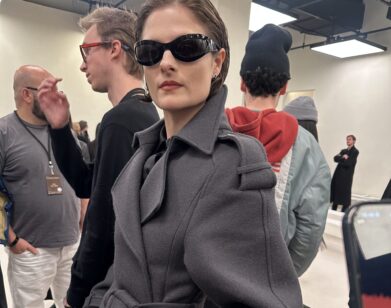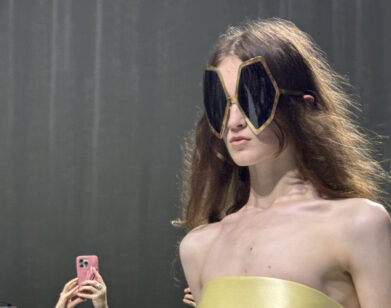fashion!
This Fashion Week, Gogo Graham and Hunter Schafer Go Home
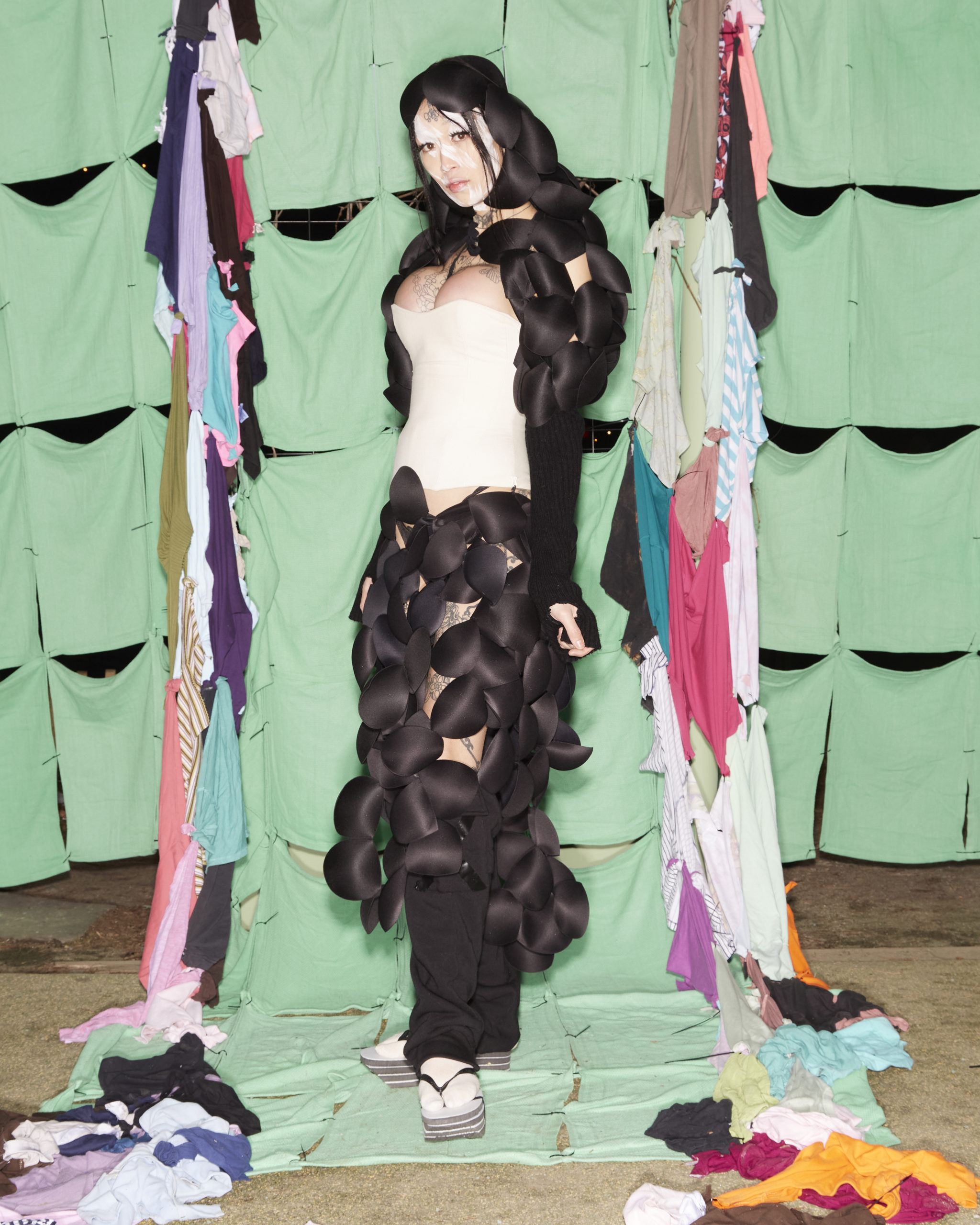
Known for turning donated clothing and up-cycled fabric into couture-like constructions fit for a range of bodies, the New York-based designer Gogo Graham has maintained a cult-like following since she got her start in 2014. Now, after a long hiatus from IRL shows, the designer is back with home! sweet home!, a striking-yet-cozy collection inspired by isolation, her Japanese heritage, and the home. Ahead of the show, Graham got on the phone with Hunter Schafer—actor, fan, model, and supporter of the brand—to discuss the designer’s purposeful casting, inspiration, and desire to maintain a sustainable production practice in a world dominated by fast fashion.
———
GOGO GRAHAM: Hey.
HUNTER SCHAFER: Hi, how are you?
GRAHAM: Good, how are you? You look so cute.
SCHAFER: Thank you. I’m so excited to walk tomorrow. First off, how are you feeling the day before the show?
GRAHAM: I’m kind of nervous, I’m all over the place, trying to do all the administrative stuff, but I’m done with the clothes so that’s good.
SCHAFER: That’s amazing, better than most designers at fashion week. I’ve been sewn into garments as a model so many times.
GRAHAM: I’m very tempted to start a new project just to see if I can throw it in there. I’m like, “No, it’s okay.” The idea is there. It doesn’t have to be chaotic.
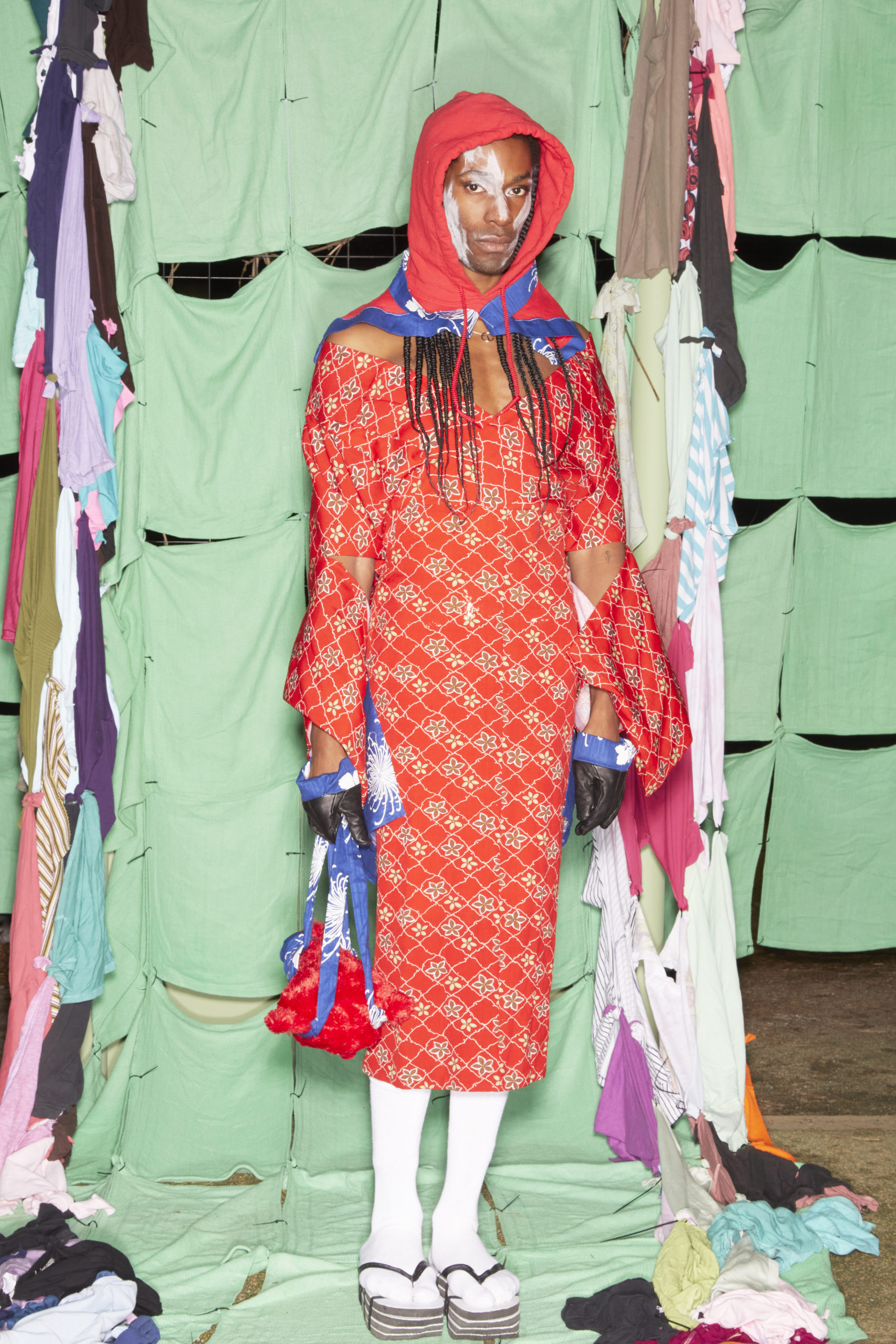
SCHAFER: We talked about this a little bit, but for the people, what inspired the collection?
GRAHAM: The title of the show, home! sweet home!, is the title of a track towards the end of Grave of the Fireflies, an ’80s anime film about these two kids in wartime Japan after the bombing of Kobe. It’s not necessarily about their story, but in that scene there’s this montage of the little sister playing dress up with objects in their home. I decided to name the show after that song because I’ve obviously been at home a lot and have had a lot of time to think and reflect. A lot of the textiles I use are very commonly found home textiles, and there’s comfort objects like stuffed animals as accessories. There’s a lot of comfy cozy knitwear. Well, I guess your look is not.
SCHAFER: Mine’s cozy!
GRAHAM: So it’s related to the home, that solitude and honestly—the depression that accompanies that solitude.
SCHAFER: Do you envision who will be wearing your collections while you’re creating them? Or do you start assembling looks and then think about who might be able to activate them later?
GRAHAM: You never know if people are going to be available or if they want to walk in the show or not. So, I usually cast first and then start to put the looks together. I make the clothes based on how I think they’ll fit with the people wearing them.
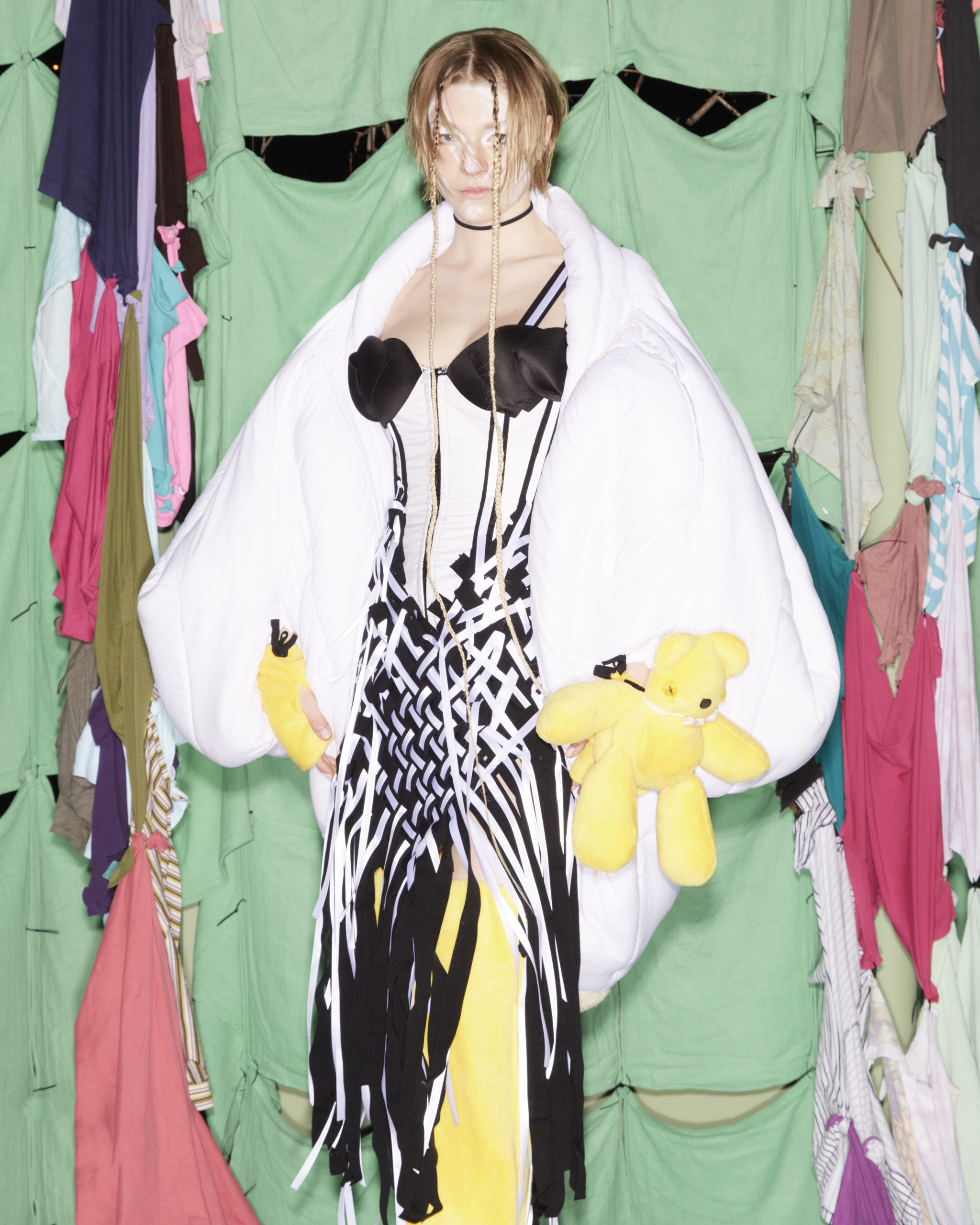
SCHAFER: That’s beautiful. I consider your work to be couture because of that, especially compared to designers who lead with sample sizing. You’re making looks with someone in mind, the entire vision is just magical. That’s couture in my head.
GRAHAM: I don’t know if it’s the people-pleasing, Libra part of me, but when I feel like I guessed right, that someone would be comfortable in a look, that’s really satisfying to me. I feel like so much of the time in fashion, people are shoved into looks that they wouldn’t wear. If you can see yourself in the look, that’s really important to me.
SCHAFER: Or if you feel like yourself. I swear it changes the way you move and everything. It’s magical when that feeling happens. How did you go about casting the show?
GRAHAM: I did the same thing I usually do. There’s people I know already who I am inspired by and ask to walk, and then there’s people I don’t know that I see on social media or elsewhere and I reach out to them. All of them are people that I’m inspired by who I think are doing really cool things. I’m very happy that you wanted to be in it.
SCHAFER: Thank you. It’s the coolest fucking cast in New York Fashion Week, in my opinion. Can you talk a little bit about the construction this season?
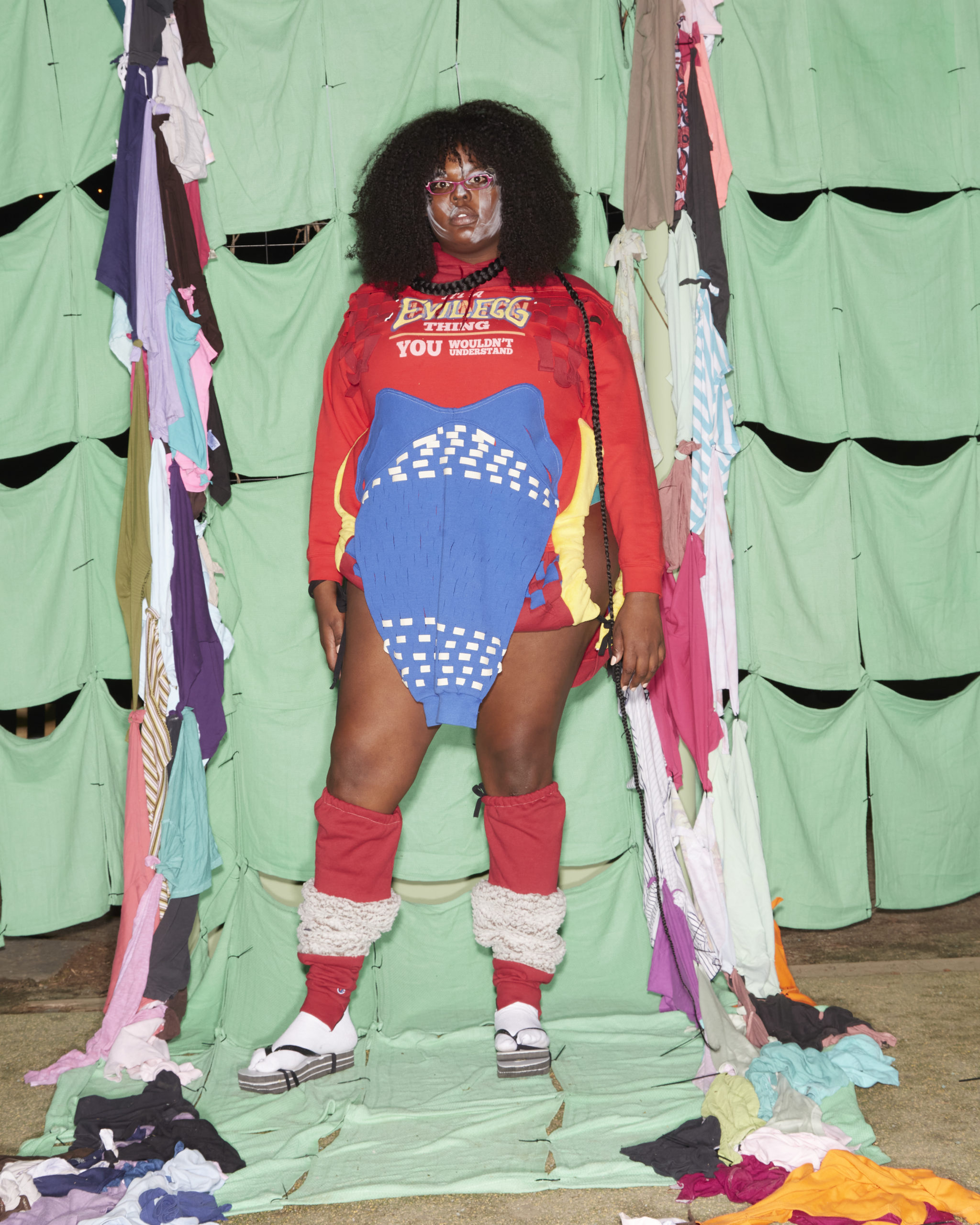
GRAHAM: There’s maybe four corseted gowns in this collection. I tried to use the corsets in a way that wasn’t necessarily molding the body, and more so to hold shape and to be supportive, which is what corsets and stays were historically made for. When I’m in a gown that has a corset built in, I’m not really worried about underwear stuff. It just adds another layer of like, “Ooh this feels good.” But I would say that most of the looks, aside from that, are not very structured. There’s sweatshirt material, a lot of t-shirt material, and comfy, casual knits that are hopefully done in a way that’s a little more exciting than their usual application.
SCHAFER: They are. Also, I have total admiration for you for working with that material, because I have tried to sew jersey knits before and it was my worst enemy when I was behind the sewing machine.
GRAHAM: It is. You really have to do what it’s telling you instead of the other way around.
SCHAFER: Yeah, you have to listen to the fabric, which is hard sometimes.
GRAHAM: Wait, what have you made?
SCHAFER: I used to want to be a fashion designer, I still do.
GRAHAM: You should.
SCHAFER: Hopefully someday. But I really liked making structural stuff and I chose woven materials versus knit because I had tried sewing t-shirts before and it made me want to die. Ok, the soundtrack—I know Serena Jara’s in charge of it. Did you give her notes or were you just like, “Go ham. Surprise me.”
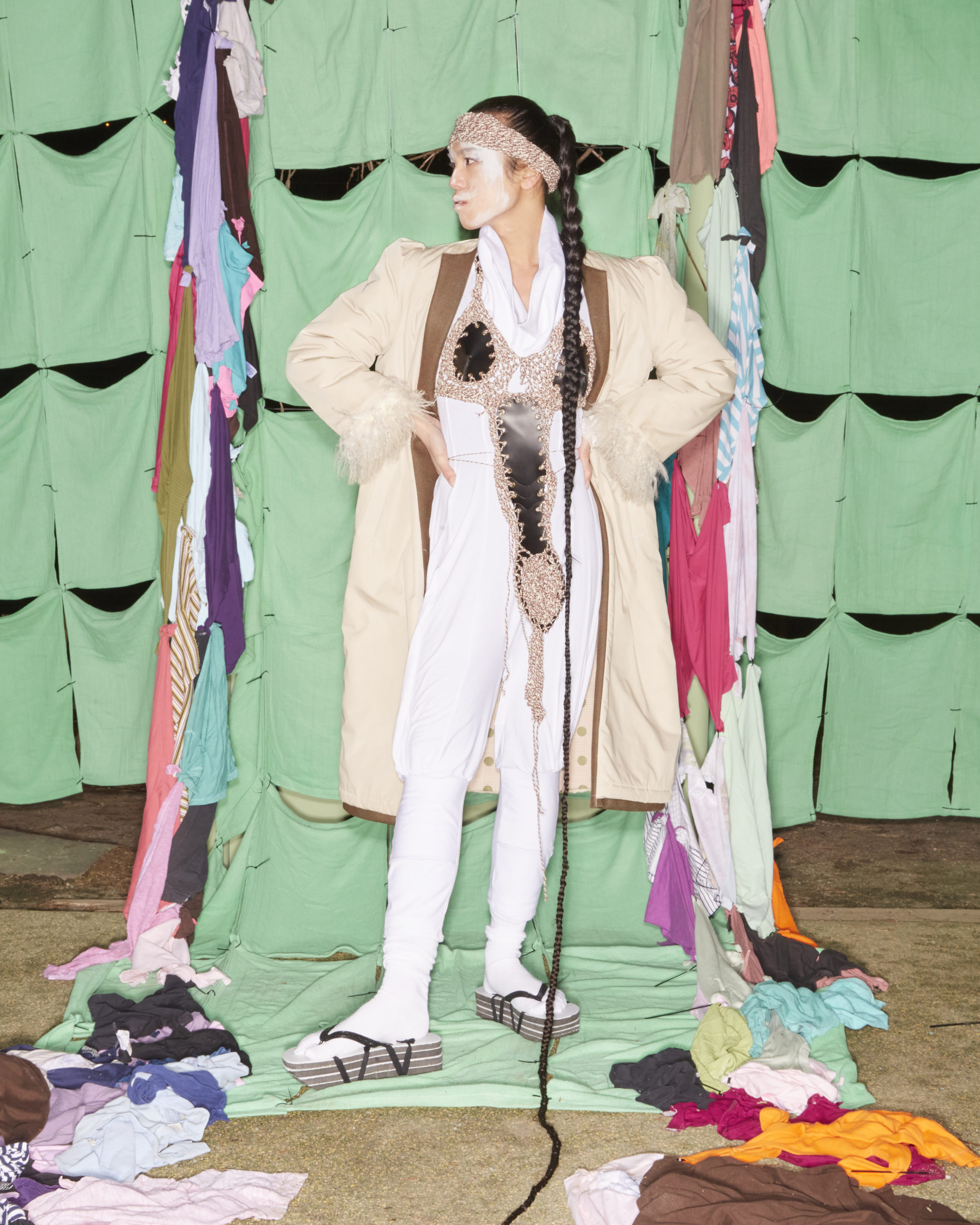
GRAHAM: Basically, I was like, “The only thing is that it should complement the collection.” She’s a musician, photographer, and DJ. I know she composed a lot of stuff that’s on the soundtrack. I told her about the inspiration and I was showing her clothes as I was making them and telling her about being at home, the isolation, depression, stuff like that. She just sent it to me yesterday and it’s really sick.
SCHAFER: Fuck yeah. Most people think of your work as slow fashion, are you interested in expanding production?
GRAHAM: I’ve recently found a couple ways to get larger quantities of recycled materials, which has been the issue in the past. Also, there are a lot of stores now that are interested in one-of-a-kind pieces. I can make sure that certain things are consistent with garments that are made from recycled stuff, like the fit of it, the finishing, the colorway. But I can’t control the exact quantity of materials, so that is a challenge but there’s room for growth. People don’t always want to buy clothes. They like to buy accessories and stuff like that, so I have some things in the works.
SCHAFER: I bought one of your mask bags from a previous collection. You can wear it as a mask but it’s also a little bucket bag. Are there any designers you look up to?
GRAHAM: Honestly, I try really hard not to look at other people’s work, because then I start to compare myself to them and I don’t think that’s healthy. Obviously I had to take fashion history courses and I’ve collaborated with people in the past, like Women’s History Museum, who I obviously think are really cool. But I really put the blinders on when it comes to contemporary fashion design.
SCHAFER: That makes sense, I feel like trends can be birthed out of designers being inspired by other designers versus, say, being inspired by a body of paintings or a movie or a director or an artist or something.
GRAHAM: I definitely think we’re in a time period when so many people are copying each other. I’m not trying to be shady, but I think it’s because we live in this compressed reality with the internet and social media. There is almost no way to not be influenced by the mountain of imagery we get in our feed. Of course you’re going to see things you like and subconsciously incorporate them into your work even if you didn’t mean to. It’s a thing to be a part of the zeitgeist, but I think there should be some room to have your own personal touch.
SCHAFER: Exactly. Choose to approach this question however you like, but do you think there has been real change in the fashion industry when it comes to representation for trans women?
GRAHAM: I have to say that I don’t know. I think I see more trans people being cast in stuff, but I don’t know what that really means. I’m like, “Did they get paid properly? Were they cast one time, just for that moment? Is it actually benefiting people?” I don’t know. Do I see more trans people? Yeah, I do.
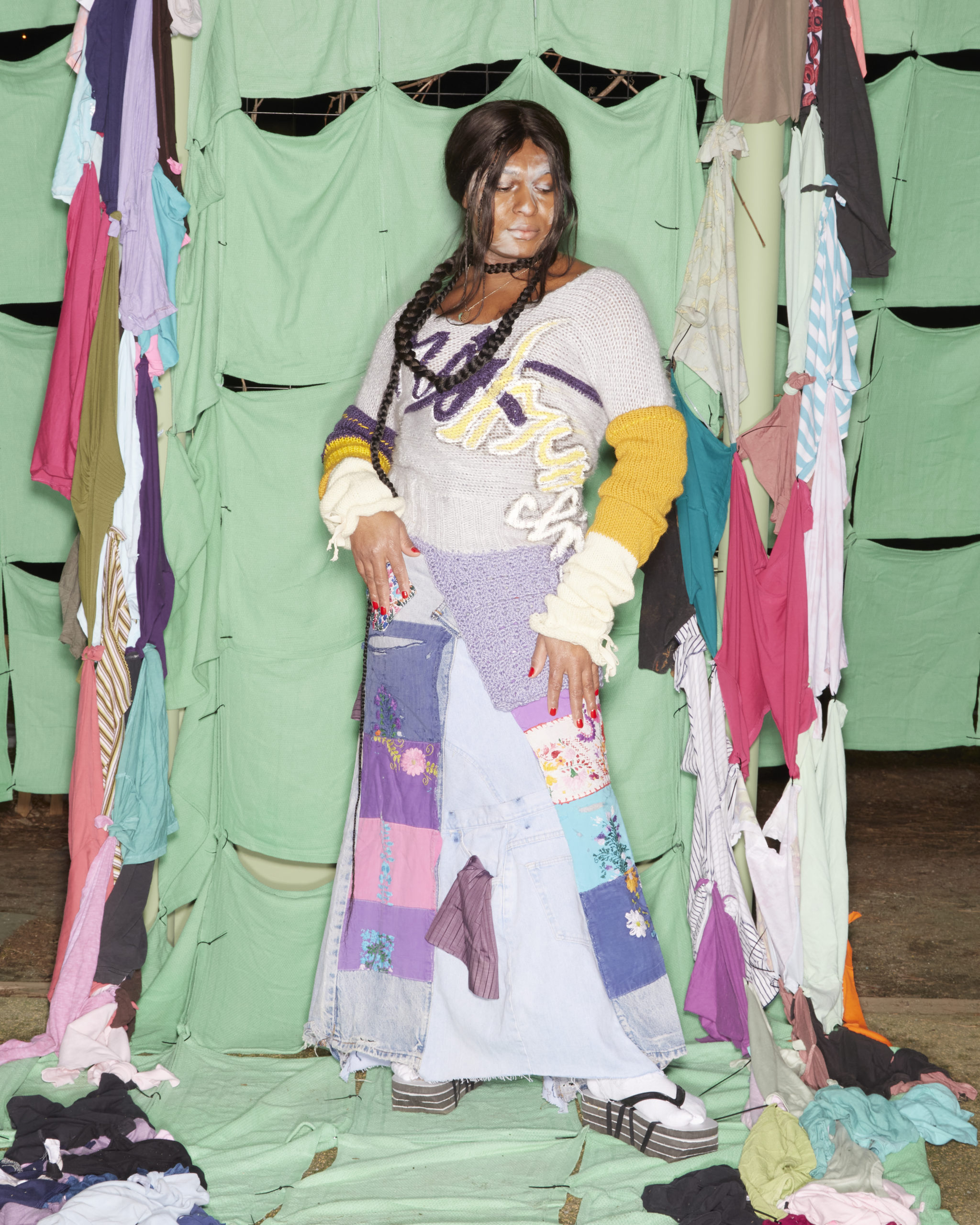
SCHAFER: Totally agree. There’s more, but what’s the actual tea with it? And finally, kind of an intimidating question. Where do you see yourself five years from now?
GRAHAM: I definitely would like to have more production going on. I hope to be still adhering to the things that I started out trying to do, like continuing to use recycled materials. I have this love for clothing and I don’t see that ending so I just hope to have growth, obviously business wise—but personally and creatively as well.
SCHAFER: Those are beautiful aspirations. Is there anything else you want to talk about?
GRAHAM: Without your help, I wouldn’t have this show. It wouldn’t be happening. Your involvement is what made this all possible. I don’t know if you wanted me to talk about that.
SCHAFER: Totally up to you. I’m just happy that this show is happening and don’t feel the need for any recognition for it on my part.
GRAHAM: I mean, it’s the truth. You sponsored the show and I wouldn’t have been able to be giving the girls a really cute check if it wasn’t for you. All of them are really happy about it and I’m really happy about it. I feel very personally honored that you felt that my work was good enough to be something that you wanted to put your money towards. It means a lot to me that you wanted to do that.
SCHAFER: It’s been fucking amazing and I’m so happy it worked out.
GRAHAM: Me too. And I hope you like the show when you’re there.
SCHAFER: I’m so excited. I think it’s going to be the cutest backstage vibe ever, everyone getting dolled up.
GRAHAM: I’m very excited. I’ll see you tomorrow.
SCHAFER: See you tomorrow. Mwah.
Look book courtesy of Gogo Graham
Hair by Sonny Molina
Make-up by Leah James
Production by Elspeth Walker

